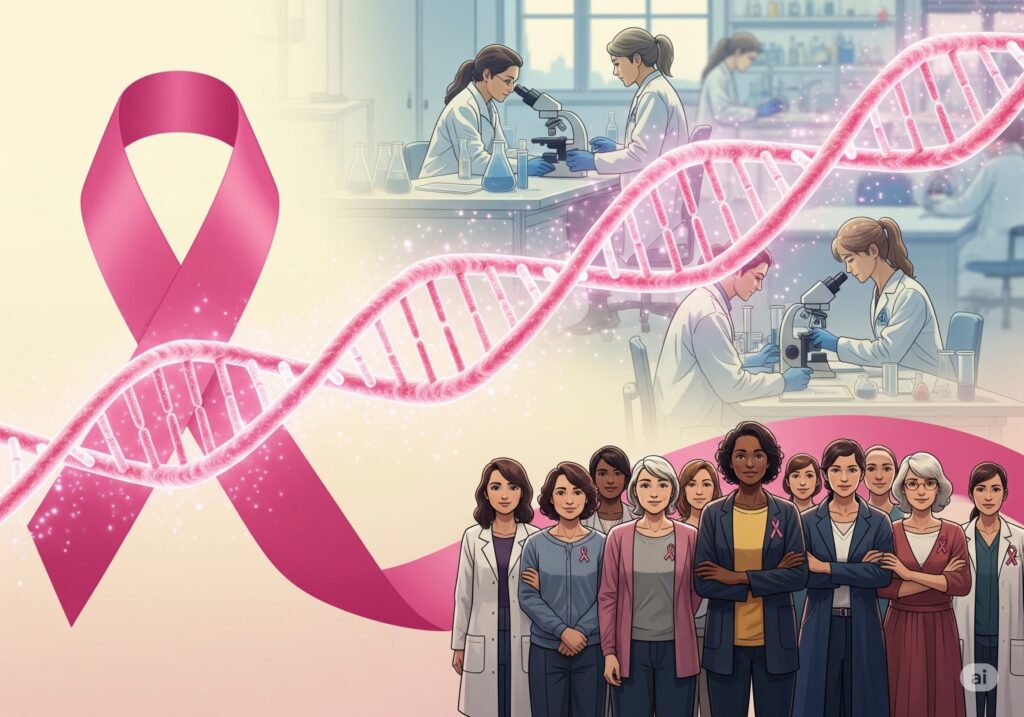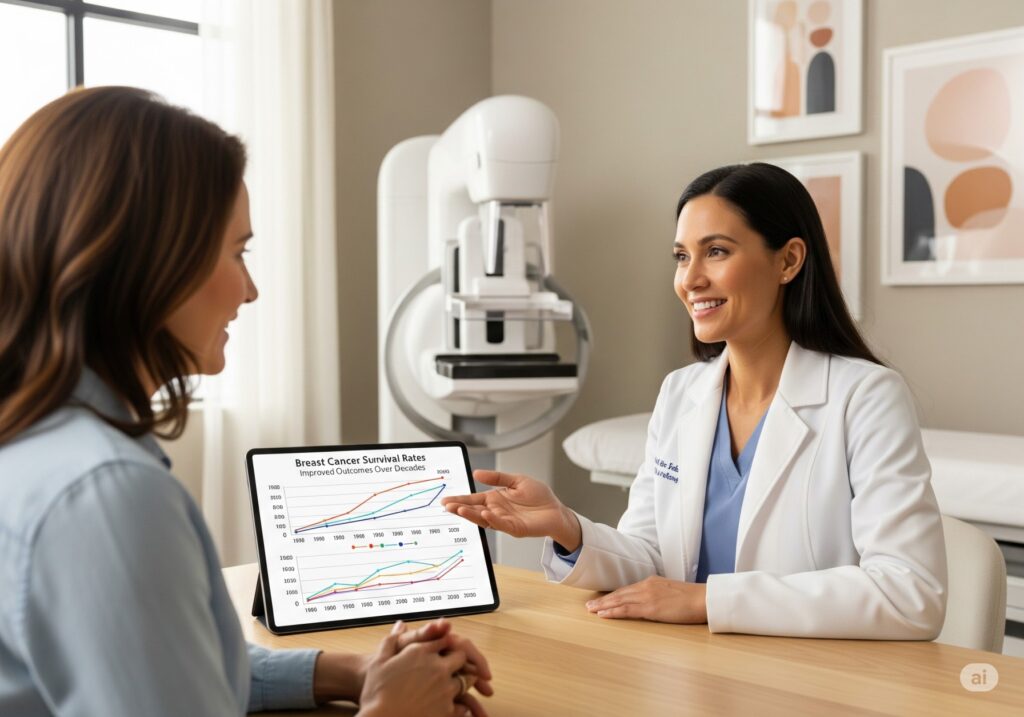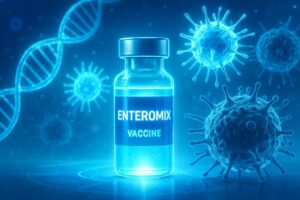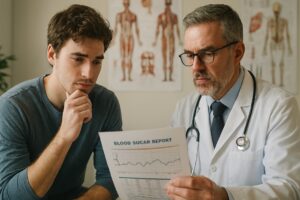
world breast cancer research day symbolizing science, history, and hope
On World Breast Cancer Research Day, we honor research milestones, patient stories, and the ongoing fight to detect, treat, and prevent breast cancer.
World Breast Cancer Research Day: Honouring history, science, and the fight for a cure
Every year on August 18, the world presses pause to celebrate discovery. We mark the people, the labs, and the lived experiences that move breast cancer research forward. This is World Breast Cancer Research Day. And yes, it is about hope. But it is also about evidence, accountability, and momentum. World Breast Cancer Research Day
Why World Breast Cancer Research Day matters
Breast cancer remains one of the most common cancers worldwide. In 2022, an estimated 2.3 million women were diagnosed. About 670,000 women died from the disease. Those numbers are sobering, but they also guide priority setting in labs and clinics across the globe. World Health Organization
Because of research, survival keeps improving in many settings. Screening gets more precise. Treatments get more targeted. Side effects get better managed. And importantly, disparities are being measured and addressed with data-driven strategies. Still, progress is uneven. That is why a day focused on research—not only awareness—matters.
A short history of discovery behind World Breast Cancer Research Day

The story stretches back millennia, from ancient descriptions of breast tumors to modern precision medicine. In the late 20th century, scientists identified HER2, a gene overexpressed in a subset of aggressive breast cancers. That discovery paved the way for trastuzumab (Herceptin), the first HER2-targeted therapy, approved in 1998 and later brought into earlier disease settings. This milestone rewrote outcomes for many patients. Cancer.gov, PMC, FDA Access dataset
Next came waves of innovation. Genomic testing refined risk. Imaging evolved. And for HR-positive/HER2-negative disease, CDK4/6 inhibitors paired with endocrine therapy extended progression-free survival and, for some regimens, overall survival. These therapies redefined first-line care and continue to be optimized. PMC, Nature, ESMO Open
What the science is saying now
Today’s research frontier is dynamic and practical. It is not only about new drugs; it is also about better detection, smarter monitoring, and more tailored treatment.
- Screening that starts earlier. In April 2024, the U.S. Preventive Services Task Force finalized guidance: routine biennial mammography starting at age 40 through 74 for women at average risk. This shift responds to the rising incidence among women in their 40s and aims to catch cancers sooner. Talk with your clinician about your risk, dense breasts, and the right plan for you. U.S. Preventive Services Task Force+1
- Liquid biopsy on the rise. Blood-based tests that analyze circulating tumor DNA (ctDNA) or circulating tumor cells (CTCs) are moving from promising to practical. They can track minimal residual disease, monitor response, and sometimes predict relapse months to years before imaging. Recent studies and reviews in 2024–2025 highlight the accelerating clinical potential. PMC+1, BioMed Central
- Predicting recurrence earlier. A highly sensitive personalized blood test presented at ASCO showed the ability to predict breast cancer’s return well before standard scans by scanning for thousands of mutations. If validated across larger cohorts, such tools could guide pre-emptive therapy and spare some people unnecessary treatment. The Guardian, The Times
Honouring the people behind World Breast Cancer Research Day
This day recognizes far more than lab breakthroughs. It honors:
- Patients and survivors who join trials and share data.
- Clinicians who translate evidence into everyday care.
- Advocates who push for funding, equity, and access.
- Researchers who design rigorous studies and publish open data.
You can learn more about the day’s mission and ways to help on the initiative’s site: World Breast Cancer Research Day (official page). World Breast Cancer Research Day
Evidence you can use today
World Breast Cancer Research Day and early detection

Screening saves lives, but it must be smart and equitable. The USPSTF now recommends biennial mammograms from 40 to 74 for average-risk women. Other bodies may advise annual screening or earlier imaging for those at higher risk. Know your risk profile. Ask about family history, prior chest radiation, and genetic testing when appropriate. Then decide with your care team. For details, see the USPSTF recommendation and evidence summary. U.S. Preventive Services Task Force+1
Also, remember this: not every breast cancer begins with a palpable lump. Changes in shape, skin texture, or nipple discharge can be clues. If something feels off, act. Research shows varied presentations, so awareness must go beyond the “find a lump” message. The Times of India
Treatments built on decades of research
Targeted therapies like trastuzumab for HER2-positive disease transformed outcomes and opened the door to multi-drug HER2 regimens that continue to extend survival. For HR-positive/HER2-negative metastatic disease, CDK4/6 inhibitors with endocrine therapy are now standard, with ongoing work to refine sequences, manage resistance, and define benefits in subgroups. PMC+1, AACR
Meanwhile, trials in immunotherapy, antibody-drug conjugates, and PARP inhibitors (for certain genetic contexts) keep adding options. The common thread is precision: the right therapy, for the right biology, at the right time.
The global fight: progress and gaps
Worldwide, breast cancer is the most commonly diagnosed cancer in women and a top cause of cancer death. But countries differ in incidence, stage at diagnosis, and access to treatment. Global agencies track these trends and guide policy. Reducing late-stage diagnosis through accessible screening and timely treatment remains a core goal. World Health Organization, IARC
Equity is not an abstract ideal; it is a research deliverable. Studies that include diverse populations make findings more reliable. Implementation science makes advances in community clinics, not just major centers.
How to support research—today
- Participate in awareness and fundraising efforts led by the official World Breast Cancer Research Day initiative and accredited nonprofits. Look for transparent reporting and peer-reviewed outputs. World Breast Cancer Research Day
- Consider clinical trials if you or a loved one is facing breast cancer. Ask your oncologist about eligibility and safety. Trials fuel tomorrow’s standard of care.
- Advocate for evidence-based screening and follow-up, especially for underserved communities. Use reliable guidance like the USPSTF statement and your national guidelines. U.S. Preventive Services Task Force
- Share trustworthy resources with friends and family, such as the WHO breast cancer fact sheet, which summarizes the global burden and proven interventions. World Health Organization
Looking ahead: where World Breast Cancer Research Day is taking us
The next decade will likely bring:
- Earlier, less invasive detection, propelled by liquid biopsy and AI-assisted imaging.
- Adaptive clinical trials that test combinations and sequences more efficiently.
- Personalized survivorship, using biomarkers to tailor follow-up and reduce late effects.
- Stronger global networks that shorten the time between discovery and delivery.
Progress is cumulative. Each dataset, each patient story, and each peer-reviewed paper stacks on the last. On World Breast Cancer Research Day, we honor that stack. But more importantly, we recommit to growing it—carefully, ethically, and fast.
Quick links and references
- World Breast Cancer Research Day – mission, ways to help. World Breast Cancer Research Day
- WHO breast cancer fact sheet – global burden and priorities. World Health Organization
- USPSTF 2024 screening recommendation – start at 40, every other year. U.S. Preventive Services Task Force
- NCI milestones – HER2 discovery timeline. Cancer.gov
- Trastuzumab (Herceptin) approvals – regulatory history and impact. PMC, FDA Access dataset
- Liquid biopsy advances – reviews and open-access overviews. PMC, BioMed Central
Note: This article is written in the original language for clarity and engagement. For medical decisions, always consult your clinician and local guidelines.







